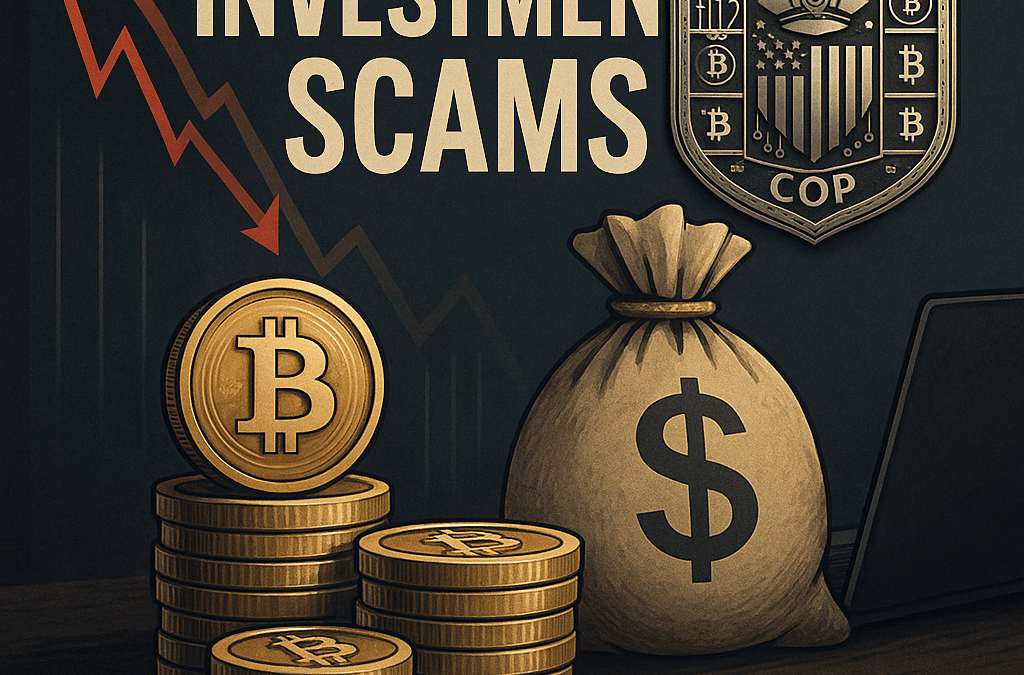Investment scams are among the most financially devastating frauds, targeting people from all walks of life with promises of fast wealth, zero risk, and insider knowledge. These schemes have evolved dramatically over the years—from mail-order Ponzi operations to sophisticated, tech-driven deceptions hosted on sleek websites and fake trading apps.
The origins of investment scams can be traced back more than a century. Charles Ponzi infamously swindled investors in the 1920s with a postage-stamp scheme, while more recently, Bernie Madoff orchestrated the largest Ponzi fraud in history. What has changed in the modern era is the reach and scale: with the rise of cryptocurrency, social media, and unregulated financial platforms, today’s scammers can operate globally and anonymously, often with little risk of being caught.
These fraudsters use a variety of methods. Some rely on old-school Ponzi and pyramid schemes, while others deploy fake crypto and forex trading platforms complete with falsified dashboards showing fake “profits.” Pump-and-dump scams are also common—where the scammer hypes up a worthless token or stock, drives demand, and then dumps their holdings, leaving victims with nothing. In some cases, scammers impersonate celebrities or influencers using deepfake videos to endorse fraudulent investments. Others forge personal relationships online, building trust before introducing victims to an “amazing” opportunity that turns out to be a trap.
The process usually begins with the scammer reaching out—often via social media, dating apps, or text—offering help to “build wealth” or “take control of your financial future.” Once contact is made, they build trust slowly, sometimes over days or weeks. They may show fake testimonials or screenshots of success. Once the victim is hooked, they’re encouraged to invest a small amount. These early deposits often appear to grow rapidly on fake dashboards, creating a false sense of security. Then comes the push: invest more, upgrade to a premium tier, or take advantage of a limited-time offer. At this point, victims may hand over thousands—or tens of thousands—of dollars. But when they try to withdraw their funds, they’re hit with unexpected taxes, unlock fees, or silence. Eventually, the platform vanishes, and the scammer disappears.
There are several red flags to look out for. Be wary of any investment promising guaranteed returns—especially those that exceed 10% monthly. Urgent pressure to act quickly, keep the opportunity secret, or pay in cryptocurrency, gift cards, or wire transfers are all major warning signs. Many scams also use fake dashboards and investment apps that lack transparency or regulatory registration.
To protect yourself, always verify that the investment platform and any advisors are registered with the SEC, FINRA, or your state securities board. Stick to reputable, well-known brokerages and exchanges with visible compliance policies. If an opportunity comes from someone you’ve never met in person—or you met online—it’s important to be skeptical. Talk to a trusted friend or financial advisor before sending money. And if something feels off, don’t ignore your instincts.
If you believe you’ve been targeted, report the scam immediately to the FTC (reportfraud.ftc.gov), SEC, or the FBI’s Internet Crime Complaint Center (IC3.gov). Early reporting can prevent future victims and improve chances of recovery.
Investment scams don’t just steal money—they steal confidence, isolate victims, and erode trust in legitimate financial opportunities. But through awareness, education, and proactive response, we can fight back. At USCryptoCop, we’re committed to helping law enforcement, training professionals, and supporting victims. If your agency or organization needs help identifying or responding to investment scams, we’re here to assist.
💰 The Anatomy of an Investment Scam: Origins, Methods, and How They Work By USCryptoCop
by Thomas Alber | Jul 31, 2025 | Basics, Crypto Scams, For Peace Officers, For the Public, For Victims, latest-news


